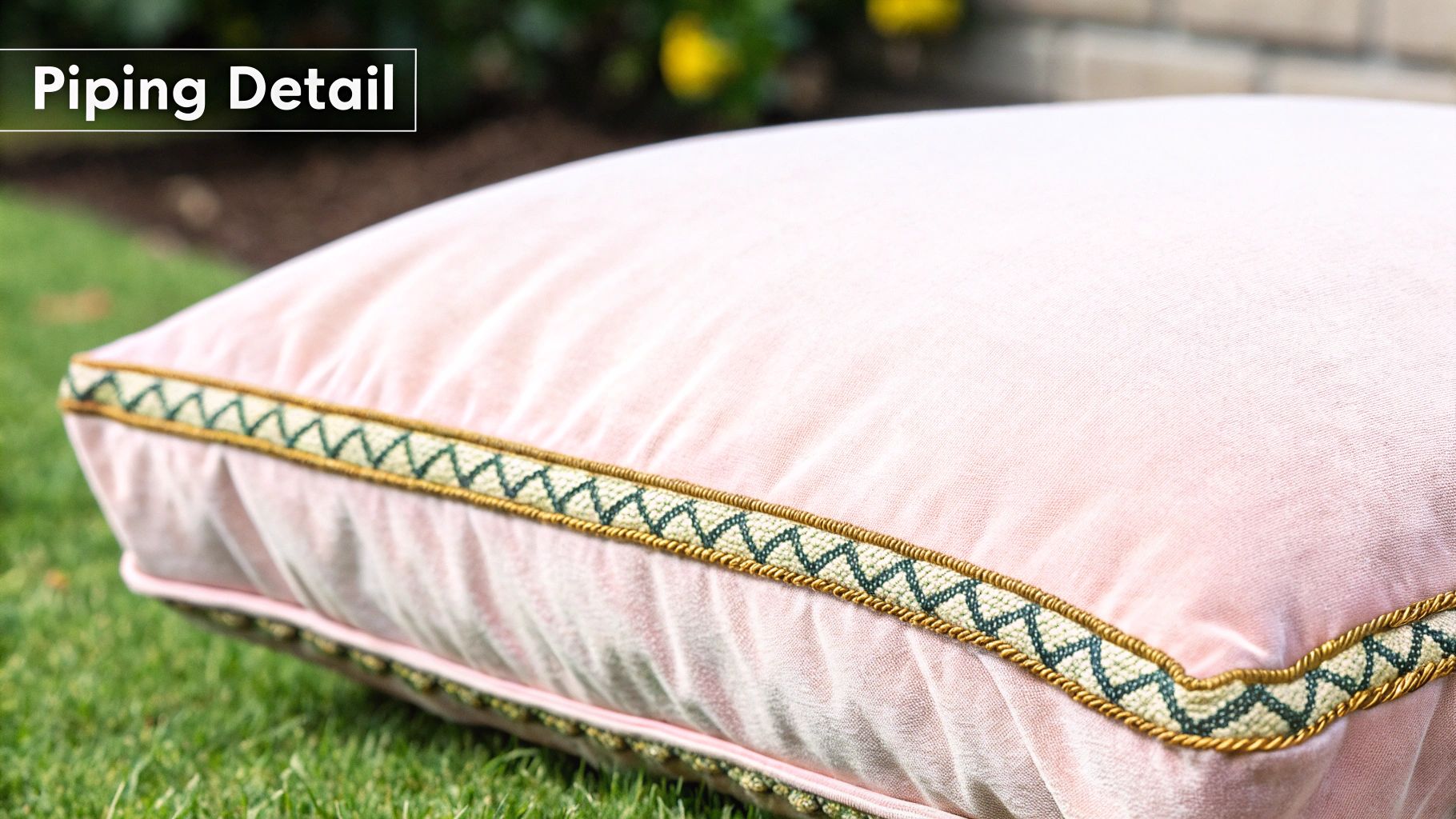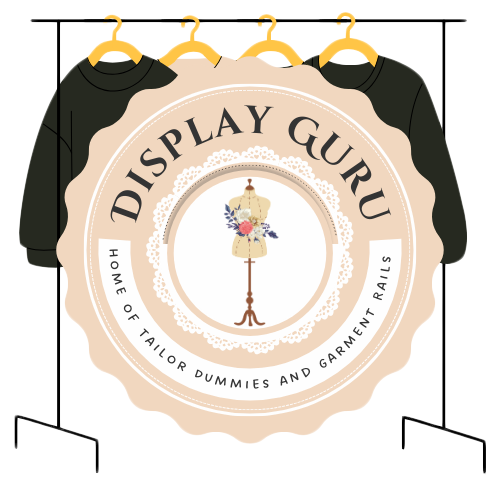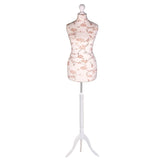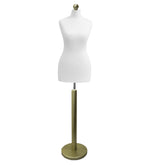10 Essential Sewing Techniques to Master in 2025
Welcome to the definitive guide on mastering the fundamental sewing techniques that separate amateur efforts from professional, high-quality garments. In the world of tailoring and dressmaking, the difference often lies in the details-the choice of seam, the precision of a hem, or the flawless insertion of a closure. These are the skills that transform a simple piece of fabric into a durable, well-fitting, and beautifully finished creation.
A solid command of these methods not only enhances the aesthetic appeal of your work but also its longevity and structural integrity. The journey to mastering garment construction often begins with selecting the right materials, including exploring diverse custom fabric collections to find the perfect weight and drape for your project. Whether you are a dedicated hobbyist aiming to refine your craft or a professional looking to perfect your finish, this curated collection of ten essential sewing techniques will provide the actionable insights you need.
We will move beyond basic theory, exploring why and when to use each technique, complete with practical examples for immediate application. Prepare to elevate your sewing projects from handmade to impeccably tailored. This guide is structured to serve as a comprehensive resource, empowering you with the knowledge to execute each method with confidence and precision. Let's delve into the techniques that form the bedrock of excellent garment construction.
1. The French Seam: The Hallmark of High-End Finishing
The French seam is a superior finishing technique that completely encases raw fabric edges within the seam itself, creating a flawlessly clean appearance on both sides of the garment. Often described as a 'seam within a seam', this method eliminates the need for an overlocker and is a signature element in haute couture and high-end ready-to-wear garments. Its elegant finish is particularly suited to delicate, sheer, or lightweight fabrics.
This technique involves two precise passes of stitching. The first joins the fabric with the wrong sides together, which is the opposite of a standard seam. After this initial pass, the seam allowance is meticulously trimmed down and pressed open, or to one side. The fabric is then folded with the right sides together, enclosing the trimmed raw edge. A second line of stitching is sewn, trapping the first seam allowance inside and creating a neat, narrow, and incredibly durable finish.
Best Applications and Implementation
French seams are the ideal choice for projects where the inside of the garment may be visible, or when working with fabrics prone to fraying.
- Ideal Fabrics: Use this technique on silk, chiffon, organza, georgette, voile, and fine cotton lawn. Avoid it on heavy or bulky fabrics like denim or wool, as it can create too much thickness in the seam.
- Practical Examples: This finish is perfect for unlined jackets, transparent blouses, silk pillowcases, lingerie, and children's clothing where a soft, non-irritating internal seam is desired.
- Implementation Tip: For a standard 1.5 cm (5/8 inch) seam allowance, your first stitch line should be 6 mm (1/4 inch) from the raw edge. After trimming this seam allowance down to 3 mm (1/8 inch), press it carefully. Your second stitch line should then be sewn 1 cm (3/8 inch) from the folded edge, which will perfectly use the remaining allowance and encase the first seam.
Key Insight: Precision is paramount with French seams. Inaccurate stitching or trimming can result in raw edges peeking through on the right side of the garment. Pressing between each step is not optional; it is essential for a crisp, professional result.
2. The Blind Hem Stitch: Achieving an Invisible Finish
The blind hem stitch is an essential sewing technique for creating a polished, almost invisible hem from the right side of a garment. It provides a secure and durable finish without visible stitching, a hallmark of professional tailoring and high-quality apparel. This method uses a special stitch pattern that cleverly catches just one or two threads of the outer fabric, making the hem attachment undetectable from the exterior.

Whether executed by hand or with a specialised blind hem foot on a sewing machine, the process involves a specific folding method. The hem allowance is folded up and pressed, and then the hem is folded back on itself, leaving only about 1 cm (3/8 inch) of the raw edge exposed. The stitches are then made in a zigzag or specialised pattern, alternating between the hem allowance and catching the tiniest bit of fabric from the main garment fold. When unfolded, the stitches are hidden inside the hem.
Best Applications and Implementation
This hemming technique is the standard for professionally finished garments where a clean, uninterrupted line is crucial. It is versatile enough for both lightweight and medium-weight fabrics.
- Ideal Fabrics: Works exceptionally well on suiting fabrics like wool and tweed, cotton twill, linen, and blends used for trousers and skirts. Avoid on very sheer or lightweight fabrics where the small "prick" stitches may be more visible.
- Practical Examples: This is the go-to finish for dress trousers, tailored skirts and dresses, formal wear, suit jackets, and lined coats. It is also a superb choice for high-end curtains and drapes to provide a clean, flowing edge.
- Implementation Tip: Carefully press the hem allowance first, then fold it back on itself. When stitching by machine, use a dedicated blind hem foot and a thread that perfectly matches the fabric colour. For hand-stitching, keep the stitches loose to prevent any puckering or dimpling on the right side of the fabric.
Key Insight: The secret to a truly invisible blind hem is in the 'bite'. The stitch should catch only one or two threads of the main fabric. Practising on a scrap piece of fabric first to perfect the tension and stitch width is crucial for avoiding visible marks on the finished garment.
3. The Flat-Fell Seam: The Gold Standard for Durability
The flat-fell seam is a powerhouse of construction, renowned for its exceptional strength and clean finish. It is a self-enclosed seam where both raw edges are completely encased, resulting in a tidy interior and a characteristic double line of stitching on the exterior. Popularised by iconic brands like Levi Strauss & Co. for their denim jeans, this technique is the go-to for workwear, outerwear, and any garment requiring maximum resilience.
This seam is constructed by first sewing a standard seam with the wrong sides together, similar to the initial step of a French seam. Next, one of the seam allowances is trimmed down to about half its width. The wider seam allowance is then folded over the trimmed one and pressed flat. The entire unit is then topstitched down to the garment, creating two parallel lines of visible stitching on the right side and concealing all raw edges within the fold.
Best Applications and Implementation
A flat-fell seam is the optimal choice when strength and a chafe-free finish are paramount, especially on sturdy, non-stretch fabrics.
- Ideal Fabrics: This technique excels on denim, canvas, twill, corduroy, and medium-to-heavyweight cottons. While possible on lighter fabrics, it is primarily designed for materials that can support the structure without puckering.
- Practical Examples: It is the definitive seam for jeans and denim jackets, durable work shirts, military-style uniforms, and heavy-duty items like canvas bags or outdoor gear. It is also traditionally used in men's dress shirt construction for a crisp, professional finish.
- Implementation Tip: For precise results, consider investing in a specialised flat-fell sewing machine foot, which is designed to fold and guide the fabric perfectly. To add a decorative touch that highlights the construction, use a contrasting or heavier-weight topstitching thread for the final pass.
Key Insight: The secret to a perfect flat-fell seam lies in accurate trimming and diligent pressing. Trimming one seam allowance precisely and pressing the fold crisply before topstitching are non-negotiable steps that prevent bulkiness and ensure your final stitch lines are parallel and professional.
4. Overlock/Serger Stitching: The Professional Edge for Seams
Overlock stitching, created by a specialised machine called a serger (or overlocker), is a cornerstone of modern garment construction. This powerful sewing technique trims the raw fabric edge, sews a seam, and encloses the edge with a thread casing, all in a single, efficient pass. It creates a clean, durable, and highly elastic finish that is the standard for commercially produced clothing and essential for working with knit fabrics.
The machine uses multiple threads (typically three or four) to form an interlocking loop stitch that stretches with the fabric, preventing popped seams. Its integrated blades simultaneously cut away the excess seam allowance just before the needles stitch, ensuring a perfectly neat edge that is impossible to achieve with a standard sewing machine. The result is a seam that is not only robust but also looks professionally finished on the inside of the garment.
Best Applications and Implementation
Overlock stitching is the go-to technique for speed, durability, and a professional finish, especially on fabrics that stretch or fray easily.
- Ideal Fabrics: This method is indispensable for all types of knit fabrics like jersey, fleece, and spandex blends. It is also excellent for finishing the seams on woven fabrics like cotton, linen, and rayon to prevent fraying.
- Practical Examples: It is the primary construction method for T-shirts, activewear, sweatshirts, and lingerie. It's also widely used to finish the internal seams of professionally made trousers, skirts, and dresses.
- Implementation Tip: Always test your serger settings on a scrap of your project fabric first. Adjust the differential feed to prevent stretching or puckering; use a higher setting for stretchy knits and a lower one for stable wovens. Keeping the machine's blades sharp is crucial for a clean cut rather than a chewed edge. Good illumination is also vital for managing the multiple threads and precise fabric feeding; you can learn more about sewing lamps on displayguru.co.uk.
Key Insight: While a serger creates beautiful seams, it does not replace a conventional sewing machine. It is a complementary tool used for seam construction and finishing. Critical steps like inserting zips, topstitching, and creating buttonholes still require a standard machine.
5. The Buttonhole: A Gateway to Professional Garment Construction
The buttonhole is a fundamental tailoring skill that marks the transition from basic sewing to creating functional, polished garments. It involves making a precisely measured opening in the fabric and reinforcing the edges with dense stitching to prevent fraying and ensure long-term durability. Mastering this technique, whether by hand or machine, is essential for a professional finish on any garment that requires a button closure.
The process begins with careful marking and stabilisation. The area is typically reinforced with interfacing to support the stress of use. A slit is then cut, and the edges are secured with specialised stitching. Modern sewing machines often feature automatic buttonhole functions that create consistent results, while a hand-worked buttonhole offers a bespoke, couture touch. The density of the stitching and the neatness of the opening are hallmarks of quality craftsmanship, showcasing an essential element of advanced sewing techniques.
Best Applications and Implementation
Perfectly executed buttonholes are crucial for both the function and aesthetic of many types of apparel and home décor. They are a non-negotiable skill for any serious sewist.
- Ideal Fabrics: While buttonholes can be made on most fabrics, success on fine or unstable materials like silk and rayon requires meticulous stabilisation. They are most commonly applied to stable woven fabrics like cotton poplin, chambray, linen, wool, and denim.
- Practical Examples: This technique is indispensable for dress shirts and blouses, coats and jackets, trousers and skirts, and tailored suits. It is also used in children's clothing and on home décor items like duvet covers and decorative cushion covers.
- Implementation Tip: Always create a test buttonhole on a scrap of your project fabric that has been interfaced in the same way as your garment. This allows you to check the tension, stitch density, and length. The opening of the buttonhole should be the diameter of your button plus approximately 3 mm (1/8 inch) to allow it to pass through without strain.
Key Insight: The most critical step is preparation. Always apply interfacing to the fabric area before you begin. This provides the stability needed for a clean cut and prevents the fabric from stretching or distorting under the dense stitching, ensuring a pucker-free and durable result.
6. Gathering and Shirring: Crafting Volume and Stretch
Gathering and shirring are foundational sewing techniques used to manipulate fabric volume, creating texture, shape, and elasticity. Gathering involves drawing up a length of fabric along one or more lines of stitching to create soft, controlled fullness. Shirring expands on this by using elastic thread in the bobbin to create multiple, parallel rows of gathers, resulting in a stretchy, decorative panel. These methods are essential for adding romantic details and comfortable, form-fitting elements to garments.
The process for standard gathering involves sewing one or two parallel lines of long basting stitches with loose tension. By pulling the bobbin threads, the fabric is carefully drawn up to the desired length. Shirring follows a similar initial principle but requires hand-winding elastic thread onto the bobbin and using a regular straight stitch. The machine's work creates the gathered effect automatically as you sew, which shrinks further with steam to create its signature stretch and texture. These are indispensable skills in any dressmaker's repertoire.
Best Applications and Implementation
These techniques are perfect for adding both decorative flair and functional fit to a wide variety of projects, from casual wear to formal gowns.
- Ideal Fabrics: Lightweight to medium-weight woven fabrics like cotton lawn, voile, viscose, chambray, and lightweight quilting cottons work best. The fabric needs enough body to hold the gather but not so much that it becomes bulky.
- Practical Examples: This technique defines the look of peasant blouses, tiered skirts, and puff sleeves. It is also used for children's dresses, creating comfortable bodices on formal gowns, and adding decorative texture to curtain headers and valances.
- Implementation Tip: For gathering, set your machine to its longest stitch length (e.g., 5.0). Sew two parallel lines of stitching, one just inside the seam allowance and one just outside. Leave long thread tails at both ends. Pull only the bobbin threads to create even gathers. For shirring, ensure your elastic thread is wound onto the bobbin by hand without stretching it. A well-organised workspace is key to managing these delicate threads; a good setup is part of achieving a professional finish, you can find great inspiration in these sewing room ideas.
Key Insight: The secret to perfect gathers is even distribution. Once you have drawn the fabric up to the required measurement, secure the threads on one end by wrapping them in a figure-eight around a pin. Then, meticulously slide the gathers along the threads with your fingers until the fullness is evenly spaced before securing the other end and stitching the piece in place.
7. Piping and Welting: For Structure, Definition, and Durability
Piping is a classic sewing technique used to add a professional, decorative raised edge to a seam. It involves sandwiching a fabric-covered cord, known as welting, between two layers of fabric before they are stitched together. This technique is celebrated for its ability to add visual interest, structural definition, and significant durability to high-wear areas, elevating a project from homemade to high-end.

The process begins by cutting a bias strip of fabric, which is then folded over a cording and stitched close to the cord using a zipper or specialised piping foot. This creates the welting. This finished welting is then pinned or basted to the right side of one fabric piece, aligning its raw edges with the fabric's seam allowance. The second piece of fabric is placed on top with right sides together, and the final seam is stitched, securing the piping perfectly between the layers.
Best Applications and Implementation
Piping is incredibly versatile, lending a polished finish to everything from apparel to home furnishings. Its primary function is to outline shapes and strengthen seams.
- Ideal Fabrics: The fabric for the piping itself should be able to handle being cut on the bias; cottons, linens, and silks work well. It can be applied to a wide range of project fabrics, from sturdy canvas for cushions to fine wool for tailoring.
- Practical Examples: This technique is a mainstay for upholstered furniture cushions and decorative pillows. It also adds a crisp finish to the collars and cuffs of formal jackets, defines the lines of evening wear, and reinforces the seams of handbags and accessories.
- Implementation Tip: For smooth application around curves, it is essential to cut the fabric strips on the bias. A zipper foot or a dedicated piping foot is crucial as it allows you to stitch right up against the cord for a tight, professional finish. Remember to pre-shrink the piping cord if you are working on a washable item. Keeping your tools and supplies in order is key for such detailed work; a well-organised sewing room can make the process much smoother. For more insights on this, you can learn about sewing room organisation on displayguru.co.uk.
Key Insight: The secret to flawless piping is stitching consistency. When sewing the final seam, ensure your needle follows the initial stitch line used to create the welting. This guarantees the stitching is perfectly snug against the cord without being visible on the finished project.
8. Dart Construction: Sculpting Fabric for a Perfect Fit
Dart construction is a fundamental tailoring technique used to transform a flat piece of fabric into a three-dimensional garment that gracefully follows the body's contours. Darts are essentially wedge-shaped folds of fabric, stitched from a wide base to a fine point, that remove excess material. This method is indispensable for creating shape and providing a flattering fit, particularly around curved areas like the bust, waist, hips, and shoulders.
The process begins by transferring dart markings from a pattern onto the fabric. The fabric is then folded along the centre of the dart, aligning the two "legs" or stitch lines with the right sides together. The dart is stitched from the wide end (the raw edge) towards the narrow point. As the stitching approaches the point, it tapers off the edge of the fabric, securing the shape without creating a pucker. This simple fold is one of the most powerful sewing techniques for professional-level garment making.
Best Applications and Implementation
Darts are crucial in any garment that requires a close or tailored fit, turning a simple fabric panel into a structured piece. Their placement and size are determined by the wearer's specific measurements, which highlights the importance of accurate data. For guidance, see this article on how to take body measurements for clothes.
- Ideal Fabrics: Darts can be used on almost any woven fabric, from cotton and linen to wool and crepe. The pressing technique may vary depending on the fabric's weight and drape.
- Practical Examples: This technique is essential for creating fitted blouses and dresses, tailored jackets and coats, shaping the waist of trousers and skirts, and constructing bra cups or other structured undergarments.
- Implementation Tip: To avoid a dimple at the dart's point, do not backstitch. Instead, leave long thread tails and tie them off securely by hand. For thick fabrics like wool or denim, you can reduce bulk by slashing the dart down the centre and pressing the seam allowances open. Always press darts over a tailor's ham or a curved pressing tool to maintain the rounded shape you've created.
Key Insight: The direction in which a dart is pressed is critical for a smooth silhouette. Vertical darts (like those at the waist) should be pressed towards the centre front or centre back of the garment. Horizontal darts (like bust darts) should always be pressed downwards.
9. The Appliqué Technique: A Canvas for Fabric Artistry
Appliqué is a wonderfully versatile sewing technique where smaller pieces of fabric are decoratively sewn onto a larger base fabric to create images, patterns, and textures. This ancient art form, whose name derives from the French verb appliquer meaning 'to apply', transforms a plain textile into a unique piece of art. It can be executed by hand for a traditional, artisanal feel or by machine for speed and precision, offering limitless creative potential.
The process typically involves cutting a shape from one fabric and positioning it on another. This shape is then secured in place before its raw edges are neatly finished with a variety of stitches, such as a satin stitch, blanket stitch, or a simple straight stitch close to the edge. Fusible web is often used as a modern aid, acting as a temporary adhesive that holds the appliqué piece perfectly in place during the stitching process, ensuring a clean and professional outcome.
Best Applications and Implementation
Appliqué is one of the most expressive sewing techniques, perfect for adding personality, branding, or intricate decoration to a vast range of projects.
- Ideal Fabrics: Almost any fabric can be used for appliqué, but crisp cottons, felt, and stable knits are particularly easy for beginners to work with. The key is to consider the relationship between the appliqué fabric and the base fabric; avoid placing a heavy material onto a very lightweight one, as it can cause distortion.
- Practical Examples: This technique is a cornerstone of quilting and patch-making. It is widely used to embellish children's clothing with fun motifs, add custom logos to uniforms, and create detailed designs on home decor items like cushions, tea towels, and wall hangings.
- Implementation Tip: For precise machine appliqué, use an iron-on fusible web. Trace your design onto the paper side of the web, iron it onto the wrong side of your appliqué fabric, and then cut out the shape. Once the paper backing is peeled away, you can position the shape on your base fabric and press with an iron to fuse it in place, ready for edge stitching. Careful planning is vital, and using a resource like a sewing project planner can help you map out complex designs.
Key Insight: The success of an appliqué project hinges on edge finishing. A dense, smooth satin stitch can create a bold, polished outline, while a delicate hand-stitched blanket stitch offers a softer, more traditional look. Always use a stabiliser on the reverse of the base fabric to prevent puckering and ensure the stitches remain flat and even.
10. Invisible Zipper Installation: The Secret to a Seamless Closure
Invisible zipper installation is a refined sewing technique that creates a flawless closure, completely concealing the zipper teeth within the seam line. When installed correctly, only the small, elegant zip pull is visible, making it appear as if there is no closure at all. This professional method is essential for garments requiring clean, uninterrupted lines and is achieved using a specialised invisible zipper foot.
The technique involves sewing the zipper to the garment's open seam allowance before the main seam below the zipper is stitched. The specialised presser foot has two grooves on its underside that guide the coiled zipper teeth, allowing the needle to stitch extremely close to the coils. This precise placement ensures that when the zip is closed, the fabric folds perfectly over the teeth, rendering them invisible from the right side.
This infographic outlines the core sequence for a successful installation, highlighting the preparatory, positioning, and stitching stages. Following this process ensures each side of the zipper is attached correctly before the final garment seam is closed, which is crucial for a smooth, pucker-free finish.
Best Applications and Implementation
An invisible zipper is the superior choice for fitted garments where a standard lapped or centred zipper would disrupt the design's silhouette. It provides functionality without sacrificing aesthetic integrity.
- Ideal Fabrics: This method works well on a vast range of light to medium-weight woven fabrics, including cotton, linen, crepe, satin, and suiting materials. For very fine or unstable fabrics, stabilise the seam allowance with a lightweight fusible interfacing first.
- Practical Examples: It is the standard closure for formal dresses and evening wear, fitted skirts and trousers, bridal gowns, and high-end tailored jackets. It is also perfect for back or side closures on blouses and jumpsuits.
- Implementation Tip: Always press the zipper tape flat before you begin. The coiled teeth are typically pressed flat during manufacturing, so gently use a warm iron to uncurl them. This allows the needle to get as close as possible to the coils, which is the key to making the zipper truly "invisible". Install the zipper with the seam allowances open and only sew the remainder of the seam below it after the zipper is fully attached.
Key Insight: The invisible zipper foot is not an optional accessory; it is fundamental to this technique. Attempting to install an invisible zipper with a standard foot will result in stitching that is too far from the coils, preventing the fabric from closing neatly over the teeth and defeating the purpose of the invisible finish.
Sewing Techniques Comparison Overview
| Technique | Implementation Complexity 🔄 | Resource Requirements ⚡ | Expected Outcomes 📊 | Ideal Use Cases 💡 | Key Advantages ⭐ |
|---|---|---|---|---|---|
| French Seam | Medium-High: two sewing steps, requires precision | Moderate fabric use, basic sewing tools | Durable, clean, fully enclosed seams | Delicate, lightweight fabrics; lingerie, baby clothes | Durable, professional finish, no raw edges |
| Blind Hem Stitch | Medium: special foot or hand skill required | Blind hem foot, matching thread | Nearly invisible hems, secure attachment | Dress pants, skirts, formal wear | Clean hems, maintains design integrity |
| Flat-Fell Seam | High: precise stitching, folding needed | More fabric, patience for accuracy | Strong, flat, decorative seams | Denim, workwear, outdoor garments | Exceptional strength, no raw edges |
| Overlock/Serger Stitch | Medium: requires special machine, threading skills | Serger machine, multiple threads | Fast, stretchy, professionally finished seams | Knitwear, activewear, RTW construction | Fast, stretch-friendly, fray prevention |
| Buttonhole Technique | Medium-High: precise cutting and stitching | Buttonhole foot, interfacing, scissors | Durable, well-finished buttonholes | Shirts, jackets, formal wear | Critical for closures, customizable appearance |
| Gathering and Shirring | Medium: even distribution critical, time-consuming | Basic sewing machine, elastic thread | Fabric fullness, flexible fit | Romantic blouses, children’s wear, gowns | Adds shape and texture, comfortable fit |
| Piping and Welting | High: prep and application time-intensive | Piping cord, piping foot, bias strips | Raised decorative edges, strengthened seams | Upholstery, home decor, formal garments | Decorative, strengthens seams, polished look |
| Dart Construction | Medium-High: accurate marking and stitching required | Marking tools, pressing aids | Shaped, contoured garment fit | Tailored dresses, jackets, formal wear | Excellent fit and silhouette shaping |
| Appliqué Technique | Medium: creative, can be time-intensive | Fusible web, stabilizer, scissors | Decorative fabric layering | Children’s clothing, quilts, fashion | Highly customizable, adds texture and detail |
| Invisible Zipper Installation | High: requires special foot and careful alignment | Invisible zipper foot, special zippers | Seamless, hidden zipper closure | Formal dresses, fitted skirts, bridal wear | Invisible from outside, professional finish |
Integrating Advanced Techniques for a Professional Workflow
The journey through these ten fundamental sewing techniques, from the hidden strength of a French seam to the flawless integration of an invisible zipper, provides a comprehensive blueprint for elevating your craft. Mastery is not merely about executing each technique in isolation; it is about understanding how they interconnect to form a cohesive, professional workflow. You now possess the knowledge to move beyond basic assembly and begin making deliberate, artistic choices that define the quality, durability, and aesthetic of every piece you create.
The true mark of an accomplished sewer lies in this synthesis. Imagine constructing a high-end silk blouse: you might employ French seams for the delicate side seams, install a perfect row of buttonholes down the front placket, and finish the sleeves with a subtle blind hem. For a pair of sturdy denim jeans, the robust flat-fell seam provides unparalleled durability, precise dart construction offers a tailored fit, and a professionally serged interior prevents fraying, ensuring the garment withstands years of wear. Each project becomes a unique combination of these foundational skills.
From Knowledge to Intuition: Developing Your Sewing Instinct
Moving forward, the goal is to transition from consciously following steps to intuitively selecting the right technique for the job. This intuition is developed through consistent, purposeful practice. Don't be afraid to experiment. Use fabric scraps to create samples of each seam finish, dart, and closure. This library of samples will become an invaluable reference, allowing you to see and feel the difference between a piped edge and a simple turned hem before committing to a final garment.
This deliberate practice builds muscle memory and a deeper understanding of fabric behaviour. You will start to recognise which sewing techniques are best suited for lightweight, drapey fabrics like chiffon versus structured materials like wool or canvas.
Key Takeaway: The ultimate goal is not just to learn these techniques, but to integrate them into a fluid and intuitive creative process. True expertise is knowing which tool to use, when to use it, and how to combine it with others for a superior outcome.
Actionable Steps for Continuous Improvement
To transform this knowledge into tangible skill, it is crucial to set clear, achievable goals. We recommend a structured approach to ensure you build a strong and versatile foundation.
- The "One New Thing" Rule: For your next three projects, commit to incorporating at least one technique from this list that you have never tried before or feel less confident with. This might mean adding piping to a cushion cover or tackling your first invisible zipper on a simple skirt.
- Create a Technique Sampler: Dedicate a weekend to creating a "stitch bible" or sampler book. On uniform squares of calico or muslin, execute each of the ten techniques. Add notes about machine settings, needle types, and any challenges you encountered. This practical encyclopaedia will be a resource you return to again and again.
- Invest in a Professional Mannequin: Perfecting techniques like dart placement, gathering, and hemming requires a three-dimensional perspective. Working on a flat surface can only get you so far. A professional tailor's dummy allows you to see how fabric drapes and hangs on the human form, enabling you to make precise adjustments for a flawless fit. It is an essential tool for transitioning from enthusiast to professional.
By systematically practising and applying these advanced sewing techniques, you will not only enhance the quality of your finished products but also unlock greater creative potential. You will gain the confidence to tackle more complex patterns, work with challenging fabrics, and bring your most ambitious design ideas to life with precision and artistry. Your work will begin to feature the hallmarks of high-end construction: durability, comfort, and a beautifully polished finish.
Ready to perfect your fit and construction on a professional-grade form? The tailor's dummies from Display Guru provide the ideal canvas for practising dart placement, draping, and achieving the perfect hemline. Explore the collection and find the perfect partner for your creative journey at Display Guru.








